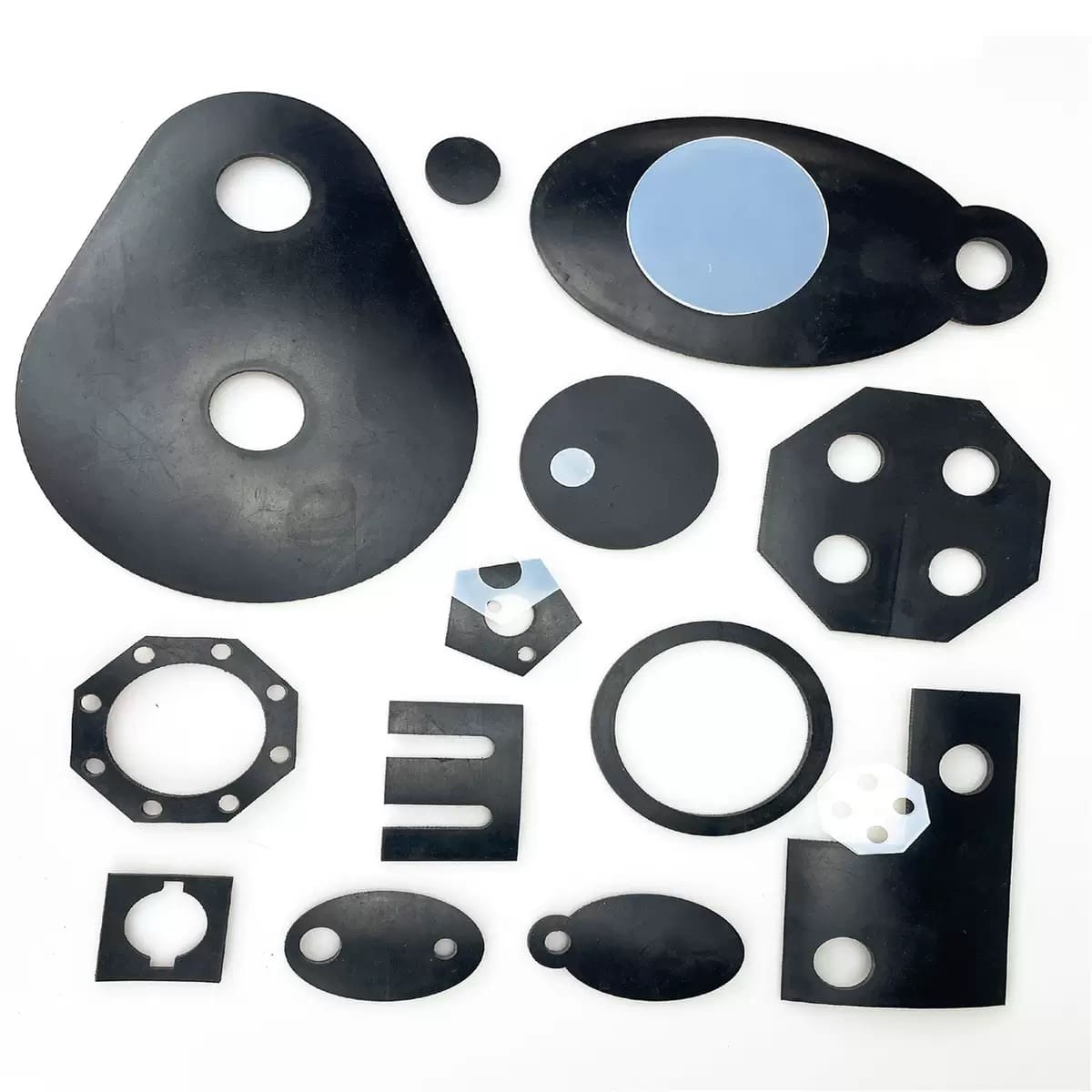Standard rubber seals often fail in extreme environments—excessive heat, corrosive chemicals, or high pressure. When that happens, the real solution is not replacement, but customization.
Custom rubber and gasket components allow for application-specific material selection, geometry design, and performance engineering—delivering leak-free results and long-term cost savings.

In this article, I’ll walk you through real-world custom sealing cases across different industries—and show how tailored rubber and gasket solutions solve problems that standard parts never could.
Can high-temperature custom gaskets handle extreme thermal stress?
One client in the plastics industry required gaskets that could withstand 600°F and 1000 PSI. Standard fluoropolymer seals were failing every 2 weeks due to thermal degradation.
We engineered a PTFE-based composite gasket with a heat-resistant core and spiral-wound edge, which achieved over 3,000+ hours of service life under continuous load.
How a heat-resistant spiral gasket outperformed conventional designs
Traditional PTFE seals began softening around 520°F. Our custom solution maintained elasticity and structural integrity at 650°F, minimizing leakage and downtime.
| Besonderheit | Standard PTFE Seal | Custom Spiral Gasket |
|---|---|---|
| Max Temp Resistance | 520°F | 650°F |
| Leakage Rate | 12% | <3% |
| Maintenance Interval | Bi-weekly | Quarterly |
| ROI Within 6 Months | ✘ | ✔ |
By using a PTFE gasket with reinforced thermal resistance, the client avoided frequent shutdowns and maintenance labor, while extending seal longevity by over 300%.
What chemical-resistant rubber seal works best in industrial cleaning systems?
A leading printing equipment brand experienced frequent clogs due to gasket crystallization during solvent flushing cycles. Standard EPDM materials reacted with alkaline detergents, leaving behind sticky residues.
We developed a peroxide-cured EPDM seal with post-curing treatment that completely eliminated chemical reaction and buildup.
Solving chemical crystallization with peroxide-cured EPDM
Peroxide curing offers better chemical stability and compression set resistance than sulfur curing. We adjusted the hardness from 45 Shore A to 60 to improve installation tightness and sealing performance.
| Metrisch | Before | After |
|---|---|---|
| Material | Vulcanized EPDM | Peroxide-cured EPDM |
| Residue in Cleaning Lines | Hoch | None |
| Flow Rate Drop | 30% after 7 days | <5% after 30 days |
| Durometer (Shore A) | 45 | 60 |
This material is now widely used in our custom EPDM O-rings for cleaning systems, providing stable sealing in high-pH and chemically reactive environments.
How do chlorine-resistant gaskets improve plumbing reliability?
For a plumbing systems supplier, chlorine corrosion led to frequent seal failures in underground PVC piping. Traditional nitrile rubber degraded within 90 days.
Our team formulated a chloramine-resistant rubber compound designed specifically for potable water systems and frequent installation adjustments.
The role of chlorine-resistant elastomers in plumbing seals
Standard materials like NBR are vulnerable to oxidative degradation. We used EPDM with enhanced anti-chlorine additives and designed the seal profile to tolerate repeated insertion forces.
| Evaluation Criteria | Standard Seal | Chlorine-Resistant Custom Seal |
|---|---|---|
| Chemische Beständigkeit | Niedrig | Hoch |
| Installation Tolerance | One-time | 5+ insertions without failure |
| Druckverformungsrest | High (over 30%) | Low (<15%) |
| Certified for Potable Use | ✘ | ✔ |
These innovations are now integrated into our rubber sealing solutions for water and gas systems.
What is the best method to eliminate flash in molded HVAC gaskets?
An HVAC manufacturer wanted smooth-finish rubber gaskets to streamline production. The issue? Post-molding flash trimming cost time and money.
We implemented a precision mold design with optimized venting, which delivered clean, flash-free seals directly from the press.
How precision mold tooling reduces cycle time
By improving the parting line accuracy and integrating a self-centering ejector system, flash was virtually eliminated—saving 15 minutes per part in manual trimming.
| Process Metric | Before Optimization | After Optimization |
|---|---|---|
| Flash Level | Medium to heavy | None |
| Post-molding Time per Unit | 15 minutes | 0 minutes |
| Production Output/Shift | 350 units | 520 units |
This approach is now standard in our custom HVAC sealing components, helping OEMs scale production faster.
Can emergency gasket manufacturing prevent critical delays?
A nuclear facility undergoing urgent maintenance contacted us at midnight with a request for a gasket no longer in production.
Using archived specs and rapid extrusion, we produced a custom EPDM profile and spliced the gasket within 12 hours—preventing costly downtime.
Rapid response: From request to delivery in half a day
| Stage | Time Required |
|---|---|
| Order Review | 1 hour |
| Material Prep | 2 hours |
| Extrusion + Curing | 4 hours |
| Splicing + Inspection | 3 hours |
| Packing + Dispatch | 2 hours |
This solution reflects our ability to deliver custom rubber gaskets for emergency industrial repair under time-sensitive constraints.
Abschluss
Custom rubber and gasket solutions provide the precision and performance standard components can’t deliver—especially in demanding environments and applications.
Let’s build your next seal—together
We specialize in rapid custom development, low MOQs, and global support. Whether you're in automotive, HVAC, or heavy industry—we deliver sealing solutions that match your exact needs.
📧 E-Mail: [email protected]
📞 WhatsApp: +86 17622979498
Let us help you seal smarter, not harder.
Related topic
EPDM O-Ring – Versatile Sealing for Water, Steam & Outdoor Conditions
Pneumatic Seals Explained: Benefits, Uses & Materials (2025)
O-Ring-Dichtung: Der ultimative Leitfaden zur Leckvermeidung (2025)


